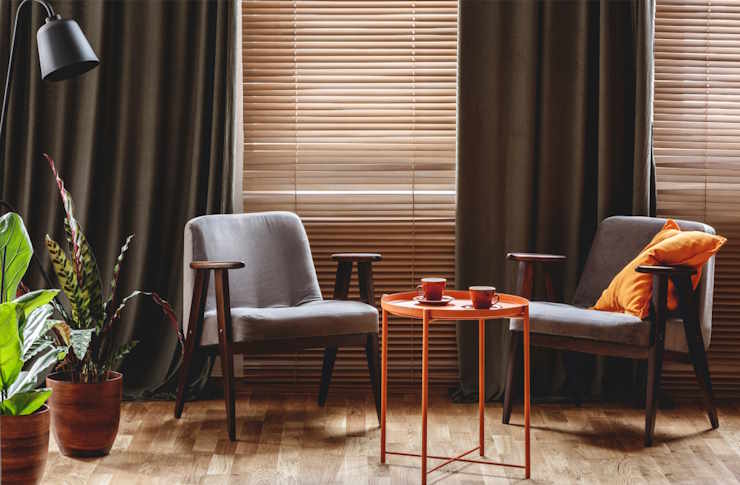Stylish Window Covering Alternatives to Traditional Vertical Blinds
Tired of outdated vertical blinds? There's a world of stylish and modern alternatives waiting to transform your home. This guide explores chic window coverings that offer better light control, superior aesthetics, and enhanced functionality. Discover how you can update your living space and find the perfect window solution that reflects your style.

Modern Blind Alternatives That Elevate Your Space
The window treatment industry has evolved considerably, introducing numerous alternatives to vertical blinds that offer both style and functionality. Panel track blinds (also called panel tracks or sliding panels) provide a sleek, contemporary look while functioning similarly to vertical blinds. These wide fabric panels move along a track system and stack neatly when open, creating a clean aesthetic suitable for large windows and sliding doors.
Cellular or honeycomb shades represent another innovative alternative. Their unique honeycomb-shaped cells trap air, providing excellent insulation while offering a streamlined appearance. Available in various cell sizes, opacity levels, and colors, they work well in nearly any room setting while improving energy efficiency.
Roller shades have also undergone significant modernization. Contemporary versions come in various fabrics, from sheer to blackout, and can include motorization options. Their simple, clean lines complement minimalist and modern interiors while requiring minimal space when raised.
Benefits of Stylish Curtains Beyond Basic Function
Curtains have evolved far beyond basic window coverings to become significant design elements. Unlike vertical blinds, curtains introduce texture, pattern, and movement to spaces. They can dramatically alter a room’s appearance, adding softness to modern interiors or formality to casual settings.
From a practical standpoint, curtains offer superior light control options. Sheer curtains diffuse harsh sunlight while maintaining privacy during daylight hours. Blackout curtains provide complete darkness for bedrooms and media rooms. Layering different curtain types—perhaps sheer panels underneath heavier drapes—allows for versatile light management throughout the day.
Curtains also contribute to a room’s acoustics by absorbing sound. This benefit makes them particularly valuable in spaces with hard flooring or minimal soft furnishings, where echo can be problematic. Additionally, high-quality curtains can enhance insulation, reducing heat loss through windows during colder months and blocking solar heat gain during summer.
Smart Window Treatments for Modern Living
Technology has revolutionized window coverings, introducing smart features that combine convenience with enhanced functionality. Motorized blinds and curtains can be programmed to open and close at specific times, controlled via smartphone apps or integrated with home automation systems. This technology is particularly valuable for hard-to-reach windows or for creating the appearance of occupancy while away.
Smart window treatments can connect with light sensors to automatically adjust based on sunlight intensity, protecting furniture from UV damage while optimizing natural light. Some systems integrate with temperature sensors to help regulate indoor climate by closing during peak heat hours or opening to allow passive solar heating when beneficial.
Voice-activated control through virtual assistants like Amazon Alexa, Google Assistant, or Apple HomeKit adds another layer of convenience. These systems can be programmed with specific scenes—such as “movie time” to close all blinds, or “good morning” to gradually open them with the sunrise.
Cost Comparison and Installation Considerations
The investment in window treatments varies significantly based on style, material, customization, and smart features. Understanding the cost implications helps homeowners make informed decisions aligned with their budgets and priorities.
| Window Treatment Type | Average Cost Range (Per Window) | Installation Complexity | Lifespan |
|---|---|---|---|
| Panel Track Blinds | $150-$400 | Moderate | 7-10 years |
| Cellular/Honeycomb Shades | $60-$350 | Low to Moderate | 5-7 years |
| Roller Shades | $40-$300 | Low | 7-8 years |
| Roman Shades | $80-$400 | Moderate | 5-7 years |
| Standard Curtains | $100-$300 | Low | 7-10 years |
| Custom Drapery | $250-$1,500+ | Moderate to High | 10-15+ years |
| Smart Motorized Options | Add $100-$500 per window | High | System dependent |
Prices, rates, or cost estimates mentioned in this article are based on the latest available information but may change over time. Independent research is advised before making financial decisions.
Installation considerations vary by treatment type. While curtains typically require only a secure rod installation, options like panel tracks or motorized systems might necessitate professional mounting. Most home improvement retailers offer installation services, with costs ranging from $70-$200 per window depending on complexity. DIY installation is feasible for basic treatments but can be challenging for larger windows or sophisticated systems.
Aesthetic Impact on Home Value
Window treatments significantly influence both the perceived and actual value of a property. Well-chosen window coverings enhance a home’s overall aesthetic appeal, potentially increasing its marketability. Real estate professionals often note that homes with updated, high-quality window treatments tend to sell more quickly than those with outdated coverings or none at all.
From an investment perspective, custom window treatments typically offer better returns than budget options. They provide improved appearance, functionality, and longevity, all factors that potential buyers consider valuable. Custom treatments that convey with the home can be highlighted as premium features during resale.
Energy-efficient window coverings like cellular shades or thermal curtains add practical value by reducing utility costs. This benefit becomes increasingly important as energy efficiency factors more prominently in homebuyers’ decisions. Similarly, smart window treatments appeal to tech-savvy buyers looking for homes with integrated automation systems.
Window coverings that protect flooring, furniture, and artwork from sun damage indirectly preserve home value by maintaining these important interior elements. This protective function, though often overlooked, represents significant long-term value for homeowners concerned with preservation and maintenance costs.
By carefully selecting window treatments that complement your home’s architecture and interior design while providing practical benefits, you can simultaneously enhance your living experience and your property’s long-term value.




